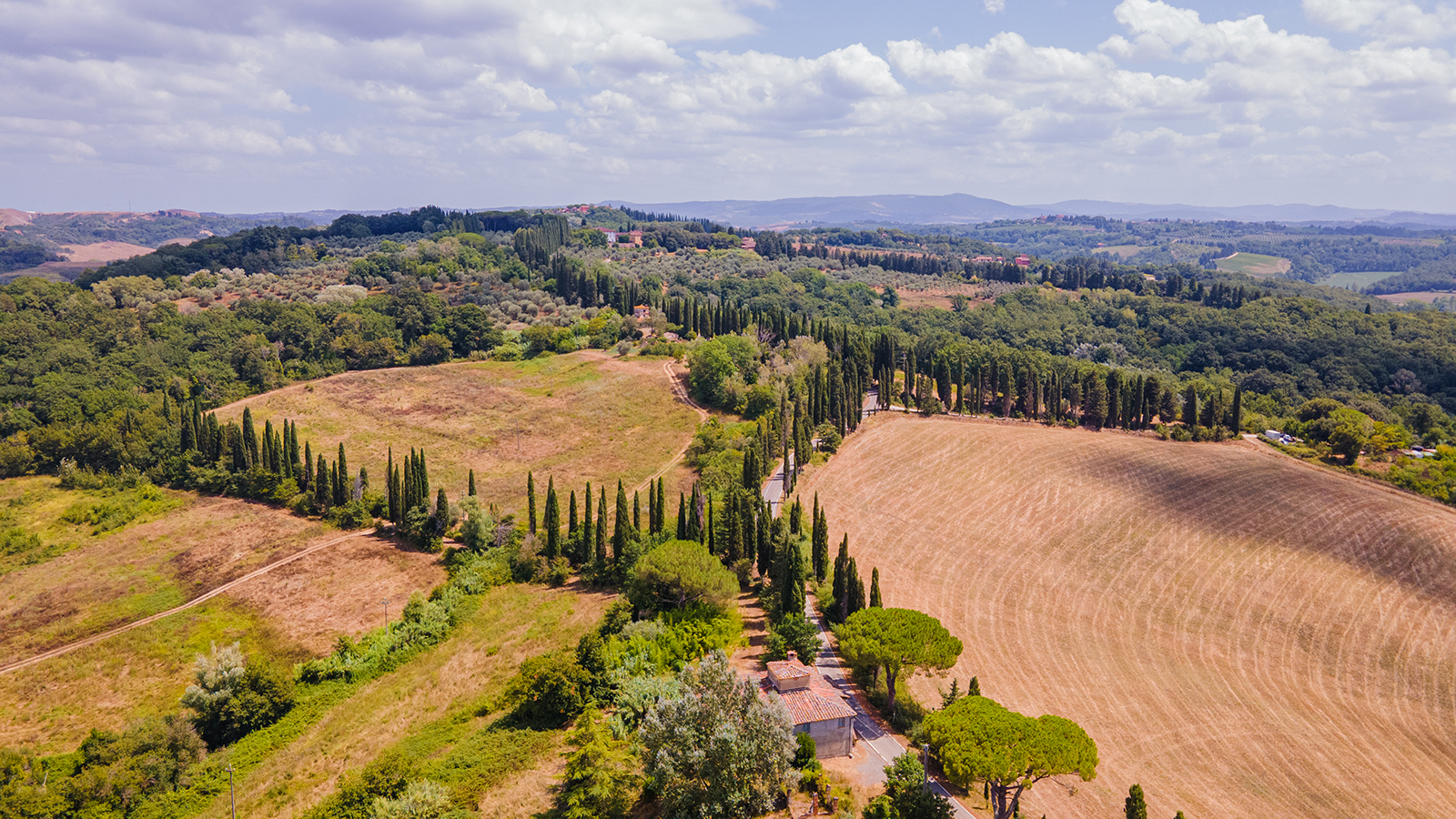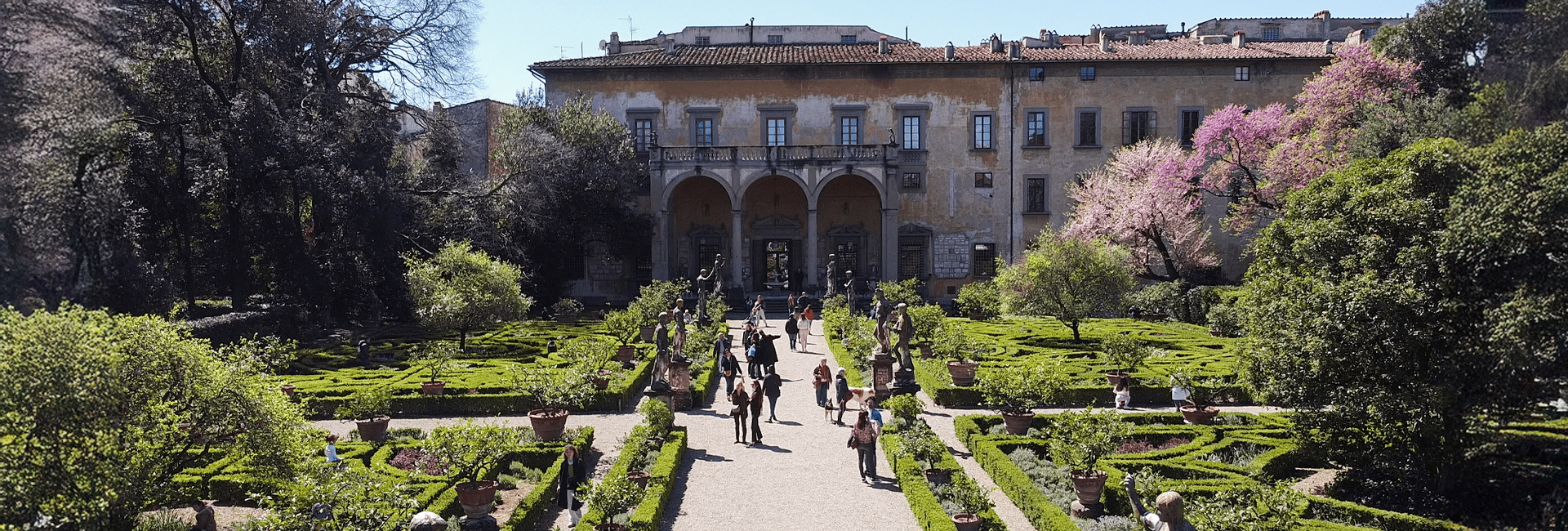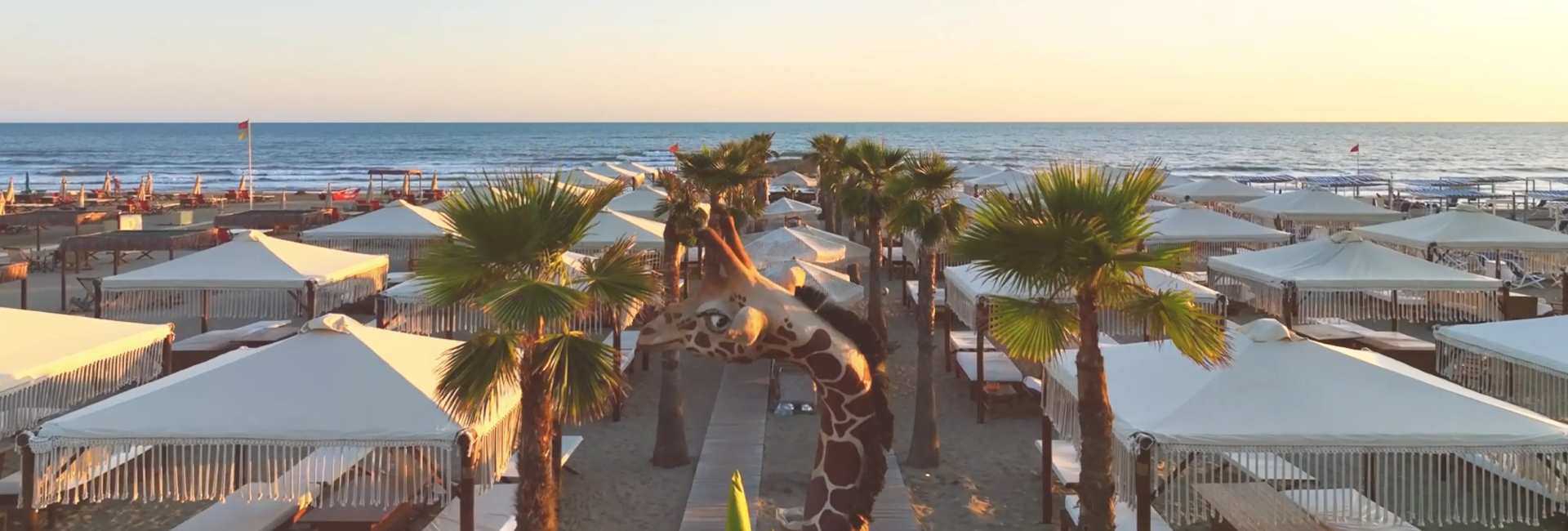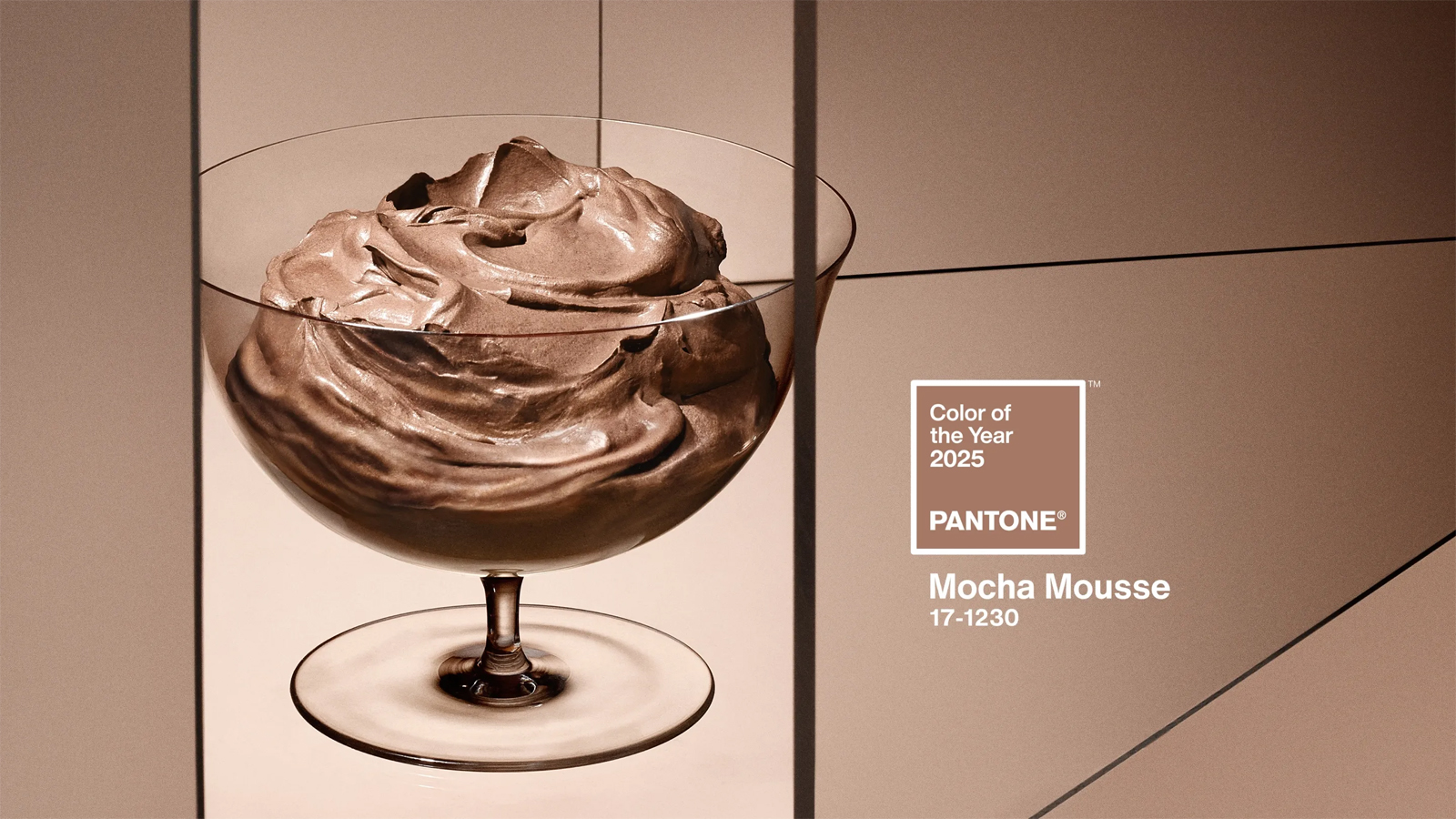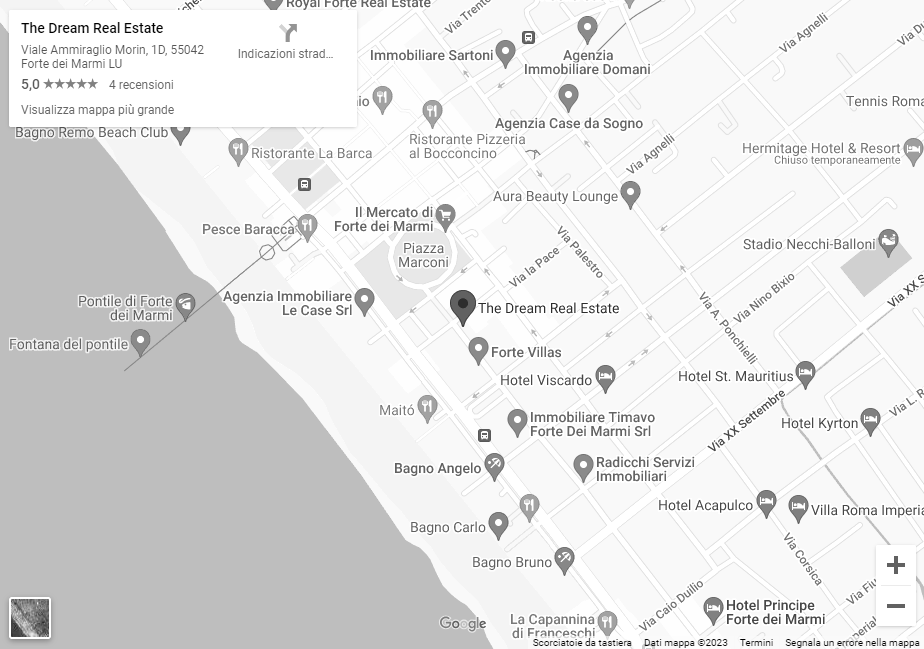Tuscany is the place where natural beauty blends with cultural richness, creating a unique and fascinating landscape. Located in the heart of Italy, Tuscany is a region that enchants visitors with its variety of experiences: from art cities steeped in history to relaxing seaside resorts, from majestic hills embroidered with vineyards and olive groves to imposing mountain peaks. Tuscany’s cities of art are authentic cultural gems. Florence, the capital, is famous for being the centre of the Renaissance, with its unrivalled collection of art and architecture, the Cathedral of Santa Maria del Fiore and the Uffizi Gallery. Siena, with its incredible Piazza del Campo, and Pisa, with its famous Leaning Tower that has defied gravity for centuries, are other examples of magnificence.
The Tuscan seaside resorts offer a haven of tranquillity and relaxation. Long, sandy beaches stretch along the coast, bathed by the crystal-clear waters of the Tyrrhenian Sea. Locations such as Castiglioncello invite visitors to enjoy the sun, sea and fresh fish cuisine. But it is Forte dei Marmi that steals the show, with its exclusive atmosphere and sophisticated beaches that often attract well-known personalities from all over the world.
The Tuscan landscape is a symphony of natural elements. The hills, covered with vineyards and olive groves, tell stories of centuries-old traditions linked to the production of wine and olive oil. These picturesque landscapes are enriched by ancient villages such as San Gimignano and Volterra, true gems of art and history.
The culture and traditions of Tuscany are anchored in daily life. Traditional festivals, such as the Palio di Siena, evoke the history and passion of the region. Tuscan handicrafts, from ceramics to hand-worked leather. The cuisine, from cured meats and cheeses to seafood dishes, rich in strong flavours and delicate when needed.
History and success
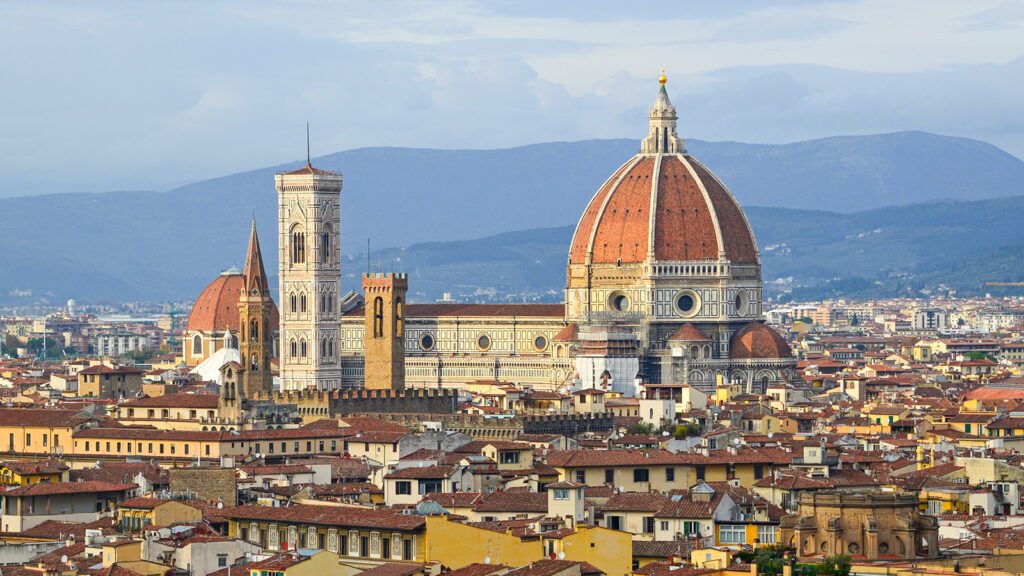
Florence, undoubtedly Italy’s most precious cultural gem, located in the centre of Tuscany, manages to enchant visitors with an essence rooted in a millennial history, an unparalleled artistic heritage and a vital spirit that pervades every corner of this fascinating city.
The exact origin of Florence is uncertain, but it is believed to have been founded by the Romans around the 1st century B.C. under the name ‘Florentia’. During Roman times, the city grew in importance as a commercial and strategic centre along the Via Cassia, one of the main communication routes of the Roman Empire.
Over the following centuries, Florence went through periods of political and social turbulence. In the Middle Ages, the city was ruled by various noble and Guelph families, in a context of conflict between Guelph and Ghibelline factions that characterised many Italian cities. However, Florence began to prosper economically thanks to trade, the textile industry and its favourable geographical position.
The Renaissance was Florence’s golden age. The city became an important cultural and artistic centre thanks to the patronage of the powerful Medici, a family of bankers and politicians. Artists such as Leonardo da Vinci, Michelangelo, Botticelli and Raphael found inspiration and patronage in Florence. The city was a crossroads of ideas, innovation and artistic experimentation.
During the 16th century, Florence was ruled by various foreign rulers and became the centre of the Grand Duchy of Tuscany, under the control of the Medici. Over the following centuries, the city lost some of its political independence but retained its cultural importance.
In the 19th century, Florence became part of the Kingdom of Italy and was also its capital for a brief period.
Today, Florence is a city that mixes its ancient history with modern cultural fervour. It is famous for its historical monuments, museums, architecture and as a centre of fashion and crafts.
Art and culture
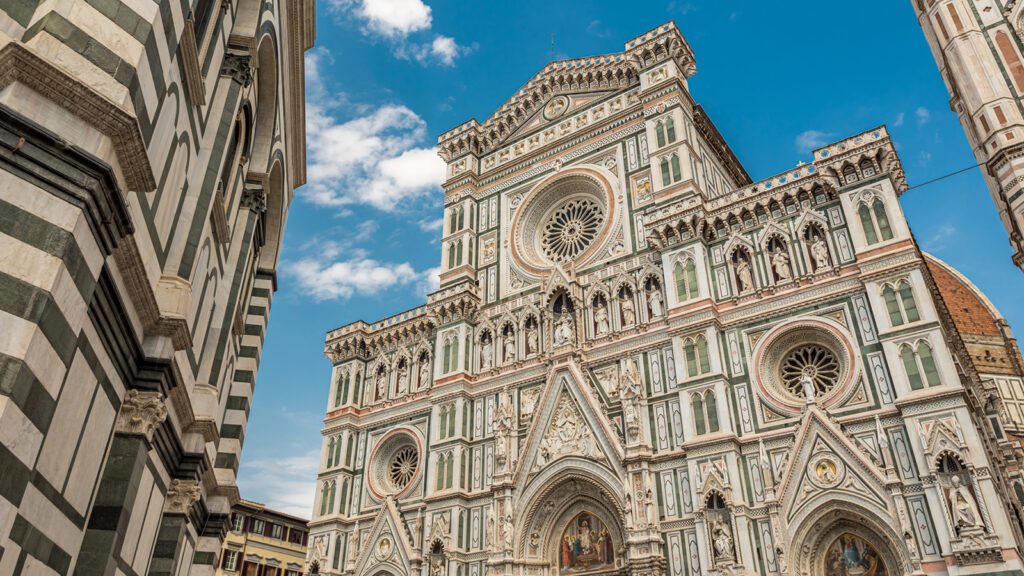
The culture of Florence also manifests itself through an architectural heritage that takes one’s breath away. An unmistakable symbol of this grandeur is the Cathedral of Santa Maria del Fiore, a majestic work of art in itself. Its dome, boldly designed by Filippo Brunelleschi, defies the laws of physics and captures the gaze of anyone who raises their eyes to the sky. This architectural masterpiece is a tangible symbol of Florence’s ambition and determination to leave an indelible mark on the history of art and architecture.
The Uffizi Gallery, one of the most famous art museums in the world, is one of the city’s most important cultural attractions and attracts millions of visitors every year. The museum is renowned for its exceptional collection of Renaissance art and beyond, ranging from painting to sculpture and decorative arts. It was conceived and built in the 16th century on the initiative of Cosimo I de’ Medici, the Grand Duke of Tuscany, as offices for government officials. However, the Medici’s passion for art led to the creation of a vast art collection that today boasts the most famous Italian artists in history: Leonardo da Vinci, Michelangelo, Botticelli, Raphael, Caravaggio and Titian. Some of the most famous works on display include ‘The Birth of Venus’ and ‘The Spring’ by Sandro Botticelli, as well as ‘Venus of Urbino’ by Titian.
The atmosphere of enchantment continues along the banks of the Arno River, which flows majestically through the city. Here, visitors can stroll along the banks, admiring alternating urban and natural panoramas. The Arno has witnessed the history and growth of Florence: along its banks, historic bridges follow one another, with Ponte Vecchio in particular recognised as the emblem of Florence’s mercantile and creative soul. This bridge, dating back to the 14th century, is an architectural jewel characterised by the workshops of jewellers, goldsmiths and artisans. These workshops have withstood the vicissitudes of time and continue to tell stories of craftsmanship and passion.
Florence is like an open book of history, art and culture, and every corner holds secrets and details that make visitors’ souls vibrate. The cobbled streets that wind between historic buildings and ancient squares, the hidden courtyards that reveal unexpected architectural splendours. In every detail, from the architecture of the palaces to the façades of the churches, the love and passion this city has for beauty and artistic expression is reflected.
Surrounding landscape
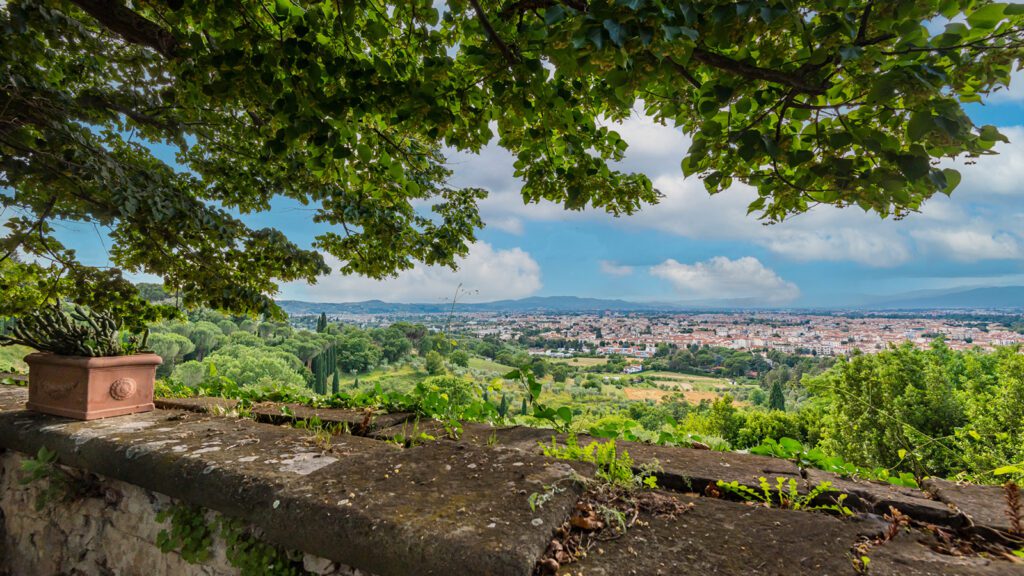
Florence, with its enchanting panorama and picturesque character, is truly a jewel among the verdant hills of Tuscany. This natural backdrop provides an evocative and inviting backdrop to the city, creating a magical atmosphere that blends harmoniously with the art, history and culture that characterise Florence.
The surrounding hills, such as the hills of Fiesole or those of San Miniato, not only give Florence a timeless natural beauty, but are also rich in history and tradition. Exploring these hills, one can discover hidden gems such as historic villas, which tell the stories of the noble Florentine families that forged the city’s destiny over the centuries.
Clubs and restaurants
Florence is a city distinguished not only by its glorious past and timeless art, but also by its vibrant contemporary scene. While the historic streets and squares evoke memories of centuries past, the bustling modern venues add a dynamic dimension to the city, capturing the energy and spirit of the present.
Florence’s gastronomic scene is a true paradise for food lovers. Restaurants here offer exceptional dining experiences, embracing both Tuscan culinary traditions and international influences. The city is home to a selection of Michelin-starred restaurants that represent the pinnacle of culinary art. Among others, we can mention ‘Gucci Osteria di Massimo Bottura’ or ‘Enoteca Pinchiorri’, which has earned no less than 3 Michelin stars and will take you on an authentic journey of top cuisine and incredible locations. Interior rooms adorned with works of art on the walls and a dream central cloister. There are also many places offering local delicacies such as the famous Florentine steak, ribollita (a traditional soup) or Tuscan crostini.
When the sun goes down, the energy of the city is transformed, creating a lively scene. Nightclubs and modern bars open their doors, the streets come alive with young people in search of music, dancing and encounters. Music ranges from dance and pop music in the clubs to live concerts ranging from alternative genres to jazz. Nightclubs offer the opportunity to dance and socialise late into the night, creating an engaging atmosphere.
Boutiques
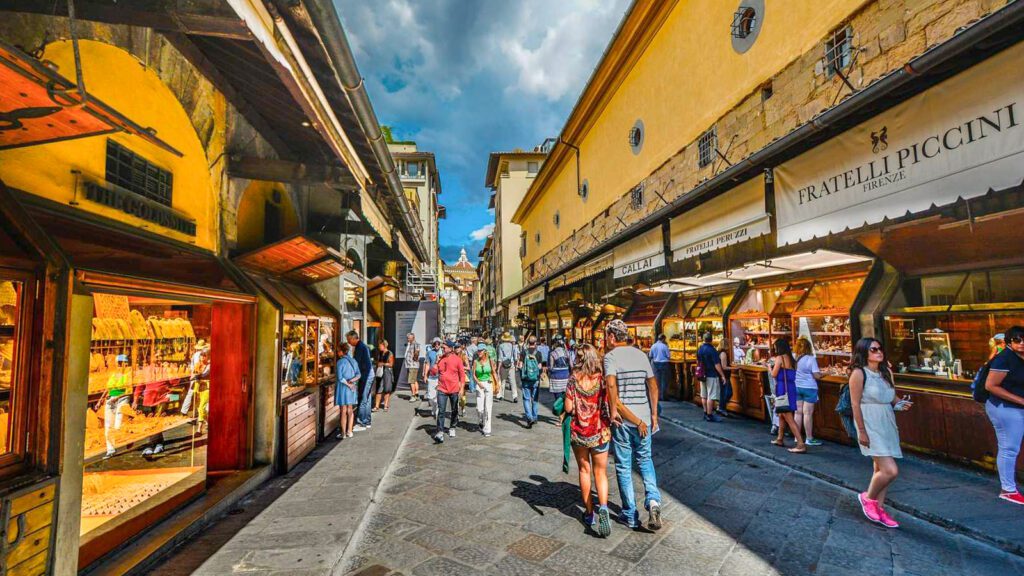
For fans of high-class shopping, Florence is truly a paradise on earth. There are plenty of high-fashion brands lining the streets of the historic centre, such as Gucci, Armani, Rolex or Prada. But Florence is not only synonymous with big brands, but also with extraordinary craftsmanship.
The artisan workshops in the city embody Italian tradition and craftsmanship, where talented leather manufacturers create bags and accessories of the highest quality. Historical brands such as Bottega Veneta and Piquadro have deep roots in Florentine craft culture, creating products that are true treasures of design and craftsmanship.
The artistic aura of Florence is also reflected in its jewellery scene. World-renowned jewellery brands such as Bulgari and Damiani offer extraordinary creations with precious stones set in unique designs.
Villas
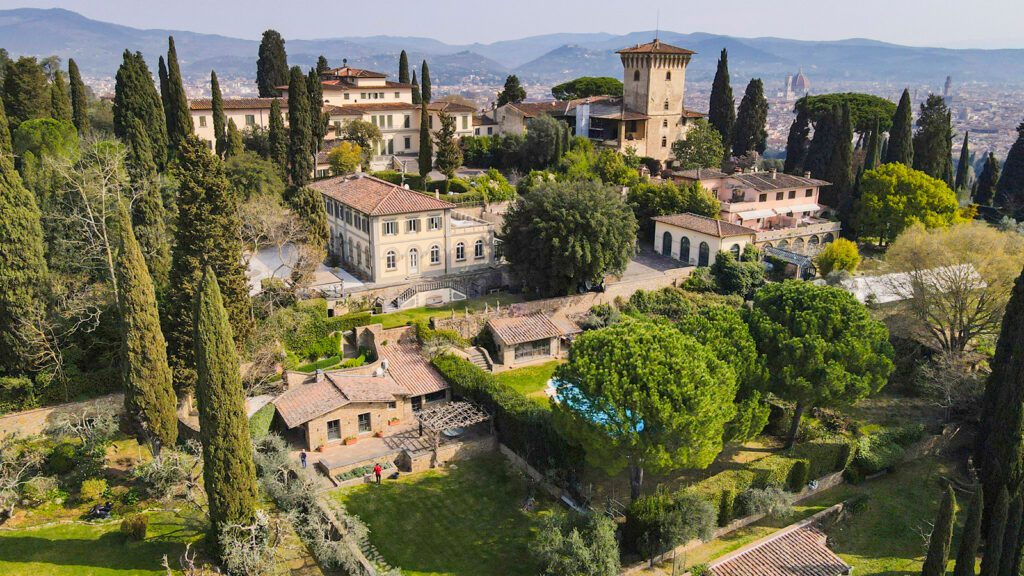
Florence presents a variety of residences spanning eras and styles, offering a truly unique living experience. Spectacular architecture includes elegant villas and majestic historical palaces in the heart of the city, modern houses and penthouses that blend contemporary comfort with historical ambience, and charming noble villas that crown the surrounding rolling hills.
The centre of Florence, steeped in history and timeless beauty, is home to a series of villas and palaces that tell the stories of noble families and past rulers. In parallel, modern dwellings and penthouses represent the lively fusion of past and present. In residential districts such as Oltrarno, elegant flats and penthouses embrace contemporary aesthetics, with spacious interiors and state-of-the-art amenities. Clean lines and minimalist design combine with historical elements, such as exposed beams or terracotta floors, creating a fascinating blend of tradition and modernity.
For those seeking a serene escape from urban life, the hills surrounding Florence are dotted with noble villas of unquestionable refinement. These historic villas, some of which have been converted into museums or cultural venues open to the public, offer a fascinating glimpse into Florence’s past. Often surrounded by Italian gardens, these aristocratic residences are living testimonies to the art, architecture and luxurious life that characterised the Florentine elite. The gardens are decorated with fountains, statues and fine plants. The architecture of the villas reflects the style and trends of the different eras in which they were built. From Renaissance elements to Baroque and Neoclassical influences, each villa has a unique personality that reveals the evolution of art and architecture over the centuries.


